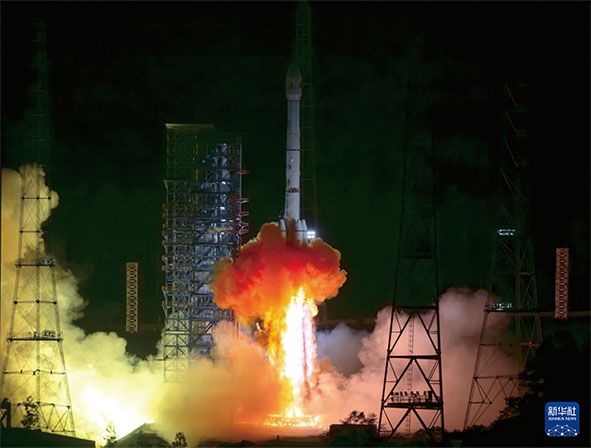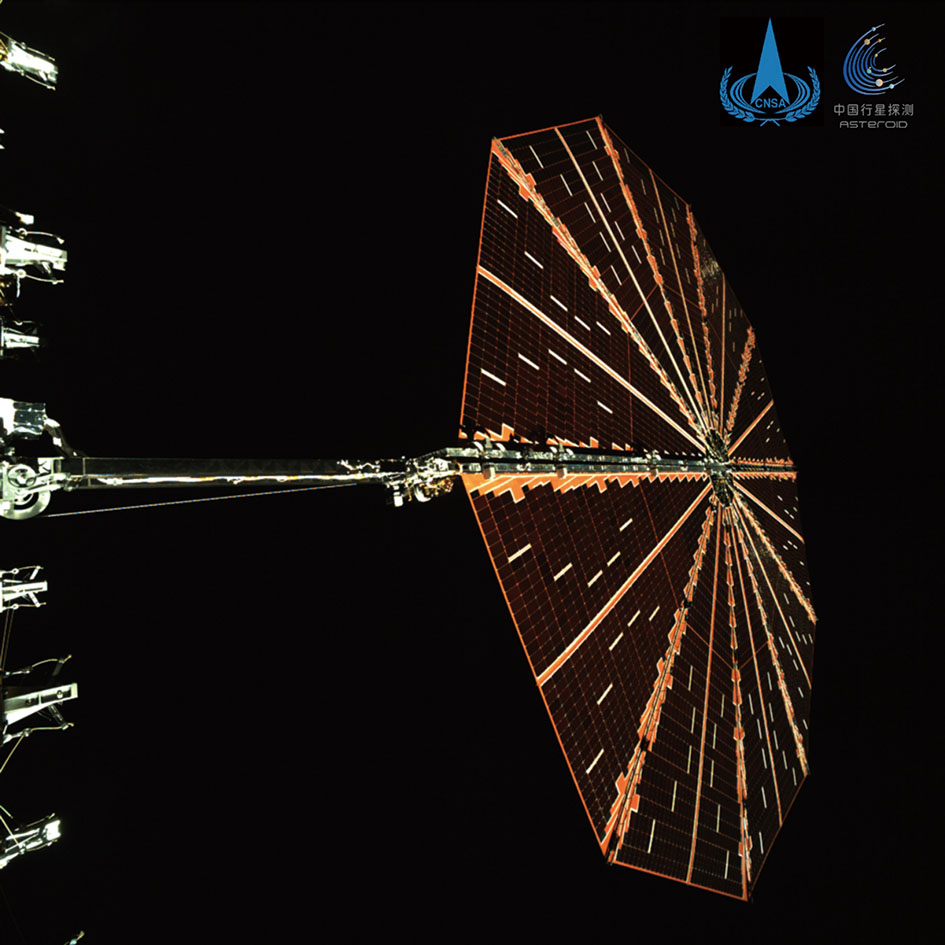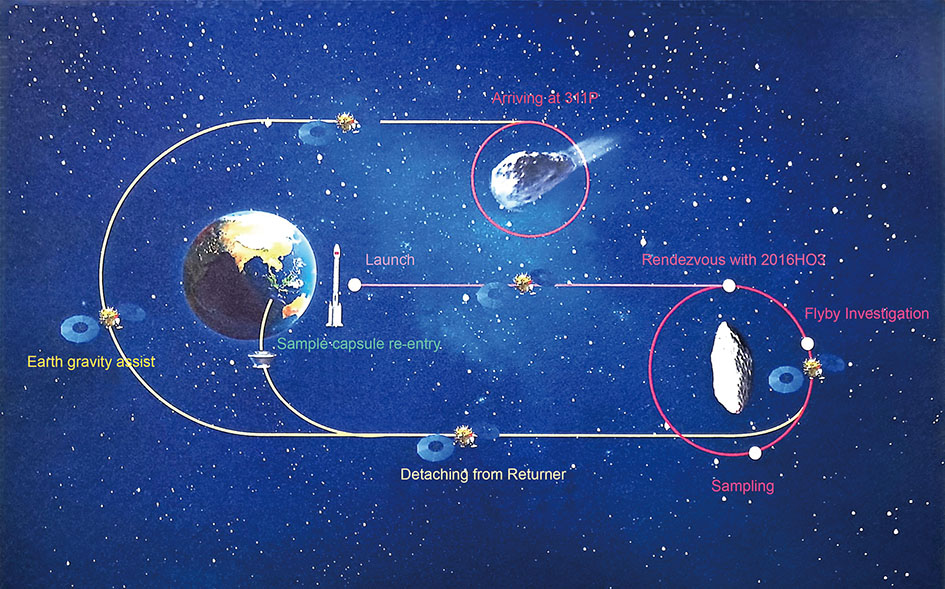By SONG Jianlan
Sent out at 1:31am GMT+8 on May 29 by a Long March-3B carrier rocket from the Xichang Satellite Launch Center in Sichuan province, China, Tianwen-2, the second mission of China’s Planetary Exploration Program, correctly entered the transfer trajectory toward an asteroid named 2016HO3 after flying for 18 minutes. Its solar wings unfolded properly, signaling a successful start, and primed for the next stage of its mission.
This marks the first attempt of China to retrieve asteroid samples.

Tianwen-2 launches. (Credit: Xinhua)

As shown in a snapshot taken by the monitoring camera onboard, the solar array of Tianwen-2 opens properly. (Credit: CNSA)
Dual Targets
The mission is to kill two birds with just one stone: The probe is expected to fly back by the end of 2027 to send a capsule home with sealed samples from 2016HO3, while the main spacecraft will continue on its long journey to 311P, a comet in the main asteroid belt of the solar system, for a flyby exploration. At that time, it will take advantage of the Earth’s gravity as a slingshot to get bounced at the comet 311P — with this trick of orbit transfer, it can save some fuels for its decade-long expedition.

Illustration of the Tianwen-2 mission. (Credit: CNSA)
The asteroid 2016HO3 is a quasi-satellite of the Earth. First spotted in April 2016, previous observations led to the hypothesis that it used to be part of the Moon, until got tore out by some major impact from an external object. It has since stayed at a relatively stable distance to the Earth, orbiting the Sun. Investigation into this asteroid might hence give some clues about the origin of the Moon, as well as the early evolution of the Earth.
The comet 311P is located in the main asteroid belt of the solar system, moving between Mars and Jupiter and behaves as a comet with a volatile tail. According to some theories, comets could have brought the Earth water molecules and its first organic substances, therefore exploration into them has been a keen dream and pursuit of human beings. It will take Tianwen-2 several years to arrive at 311P.
Challenging Journey
Both targets are quite far away: 2016HO3 is 18 to 46 million kilometers afar, and 311P is even hundreds of million kilometers away — farther than Mars. The long distance plus their tiny sizes pose challenges on the orbit measuring and control: from the perspective of a human observer on the Earth, approaching them and particularly landing on the asteroid will be just like dancing on the tip of a needle. The asteroid’s faint gravity can even worsen the situation, as it can barely anchor the approaching spacecraft for landing. All these demand very accurate autonomous navigation and control of the spacecraft. On the other hand, we cannot observe very clearly the two remote objects via optical telescopes, hence what we know about them remain very limited. Approaching the asteroid, the probe will first orbit around it for closer observation before determining the landing site and sampling area; still, however, when landing on its surface, Tianwen-2 will have to deal with some unknown situations, at the absence of real-time instruction from human beings — the long distance will make timely communication impossible.
But the mission is worthy. The asteroid and the comet, aged about 4 billion years, could have preserved some primordial information about the evolution of the solar system. Unlike the major planets in the solar system, they did not endure volcanism or radical tectonic movements, which could destroy the traces from the early times, therefore might have preserved the most primitive material compositions from the early life of the solar system.
Filling a gap in China’s deep space exploration, this mission will also inform and inspire the country’s ensuing mission for sample return from Mars.
Participating the mission, Chinese Academy of Sciences takes charge of developing some equipment, including the ground application system, the scientific payloads, and the Very Long Baseline Interferometry system for orbit measuring. The eight scientific payloads onboard, including cameras, a visible and infrared imaging spectrometer, a thermal emission spectrometer, a radar, a magnetometer, and analyzers for charged and neutral particles, as well as for ejected materials, will be used to investigate the asteroid and the comet’s morphology, compositions, rotation patterns and thermal radiation, inner structures and possible ejecta – materials projected from the inner structure by external impacts. Once the samples are returned, scientists will have the opportunity to measure and analyze their physical properties, chemical and mineralogical compositions, isotopic contents and structures, looking at the early formation and evolution of the asteroids as well as the solar system.

